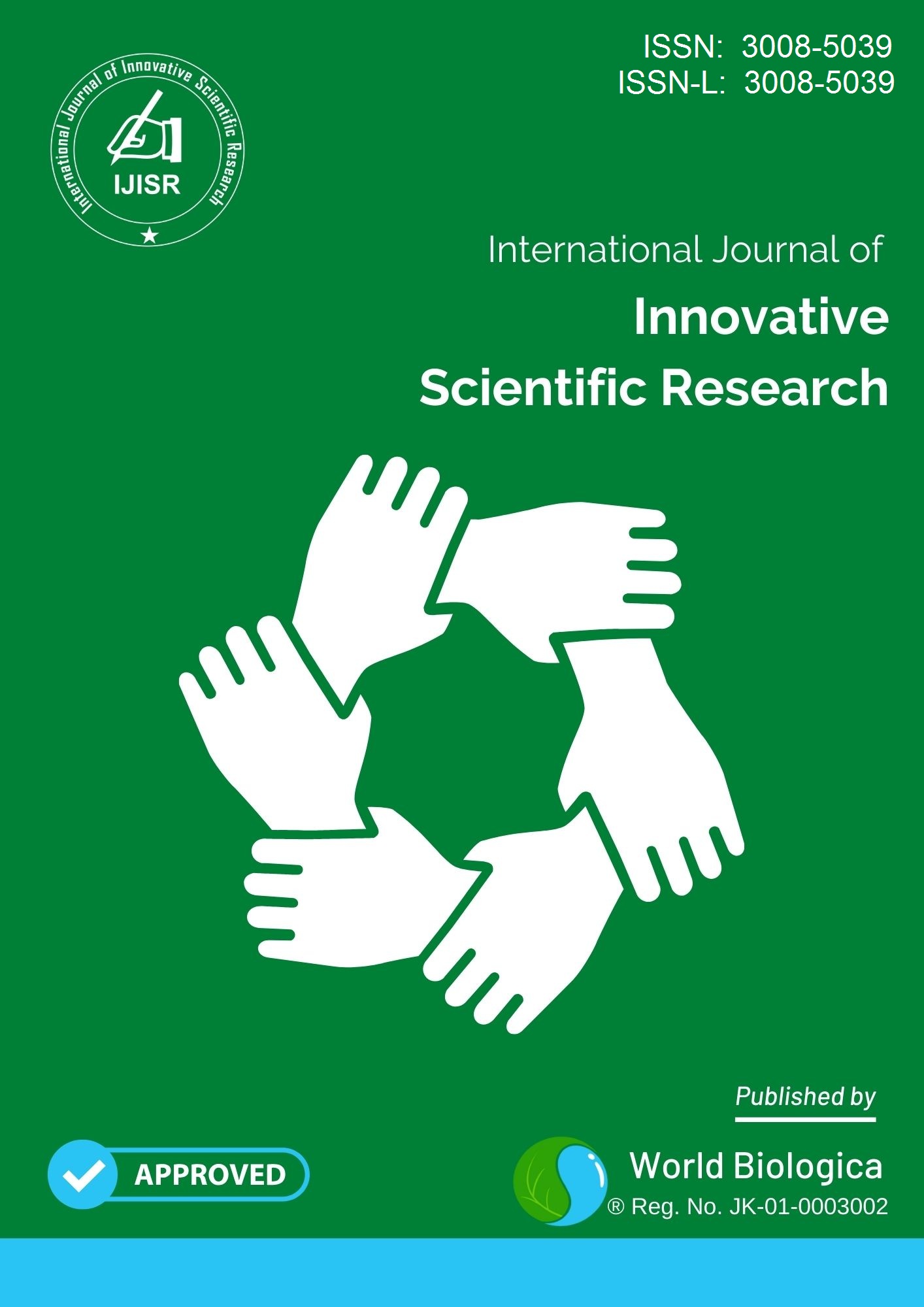Analysis of the Relative Performance of Smallholder Rice Farmers Under the Anchor Borrowers Programme in South-East, Nigeria
Keywords:
Anchor borrowers, Programme, Smallholder farmers, Paddy rice, Agricultural credit, South-East Nigeria, Productivity, Performance evaluationAbstract
This study analyzed the relative performance of smallholder rice farmers under the Anchor Borrowers’ Programme (ABP) in South-East Nigeria. The research assessed the socioeconomic characteristics of beneficiaries and non-beneficiaries and examined the factors influencing the value of paddy rice among both groups. A multi-stage stratified random sampling technique was employed to select 720 rice farmers (360 beneficiaries and 360 non-beneficiaries) across Abia, Anambra, and Ebonyi States. Primary data were collected using structured questionnaires, while secondary data were sourced from the Central Bank of Nigeria, ADPs, and RIFFAN. The data were analyzed using descriptive statistics and multiple regression techniques. Results showed that male farmers dominated both groups, although female participation was relatively higher among beneficiaries. Beneficiaries had better educational attainment, smaller household sizes, and larger farm holdings on average. Regression analysis revealed that the value of paddy rice was significantly influenced by several factors: farming experience (p < 0.01), household size (p < 0.05 for beneficiaries; p < 0.01 for non-beneficiaries), gender (p < 0.01), cooperative membership (p < 0.01), farm size (p < 0.01), education (p < 0.01), and price of paddy (p < 0.01). Additionally, quantity of seed used was significant only for beneficiaries (p < 0.01), while income level significantly affected the value of paddy rice only for non-beneficiaries (p < 0.05). The suggested policy adjustments that promote inclusivity especially for female farmers, elderly farmers, and those with lower education. Enhanced extension services, simplified access procedures, and expanded cooperative frameworks are recommended to boost programme impact and close the productivity gap.
Downloads
References
Ajah, J., Igiri, B. E., & Ekpenyong, I. E. (2017). Determinants of farmers’ access to agricultural credit in Nigeria. Nigerian Journal of Agricultural Economics, 7(2), 34–42.
Akinniran, T. A., & Faleye, T. (2020). Financial challenges of rural farmers in Nigeria and the way forward. Journal of Rural Development Studies, 5(1), 22–33.
Balogun, A. L., Ojo, O. A., & Afolabi, M. A. (2021). Gender disparities in access to agricultural financing in Nigeria: Evidence from Anchor Borrowers’ Programme. African Journal of Agricultural Research, 16(6), 732–740.
Central Bank of Nigeria (CBN). (2016). CBN Anchor Borrowers’ Programme guidelines. Abuja: CBN Publications.
Chandra, V., Emmanuel, T., & Emmanuel, A. (2025). The role of farmer cooperatives in improving access to credit in developing countries. Journal of Development Finance and Rural Economics, 9(1), 55–69.
Emmanuel, J., & Mundia, R. (2019). Input use and output value among smallholder rice farmers in sub-Saharan Africa: Evidence from Zambia. Journal of Agricultural Development, 6(4), 221–230.
Emefiele, G. I. (2016). The role of CBN in promoting agriculture: Anchor Borrowers’ Programme. Abuja: Central Bank of Nigeria.
FFI. (2016). Farming Finance and Inclusion: The challenge of credit access in Nigeria's agriculture. FFI Working Paper No. 11.
Grow Africa. (2017). Transforming agriculture in Nigeria: A case study of the rice value chain. Retrieved from https://www.growafrica.com
International Institute of Tropical Agriculture (IITA). (2017). Challenges of low productivity among Nigerian farmers. IITA Policy Brief Series No. 12.
Irohibe, I. J., & Agwu, A. E. (2014). Household size and agricultural labor supply in sub-Saharan Africa. African Journal of Food, Agriculture, Nutrition and Development, 14(4), 9089–9102.
National Bureau of Statistics (NBS). (2019). Statistical abstract for the South-East region. Abuja: NBS Publications.
National Population Commission (NPC). (2006). 2006 Housing and population census. Abuja: NPC.
National Population Commission (NPC). (2021). Projected population estimates by geopolitical zone. Abuja: NPC.
Nelson, R., Ugwu, G., & Musa, A. (2024). Determinants of rice yield in Nigeria: A multivariate analysis. Journal of Agricultural Policy and Research, 14(2), 91–105.
Nwoke, C. I. (2016). Age dynamics in agricultural performance among rural farmers in Nigeria. Nigerian Journal of Agricultural Extension, 17(1), 88–95.
Nwosu, F. O. (2014). Determinants of access to agricultural credit among smallholder farmers in Nigeria. Journal of Rural Economics and Development, 28(2), 145–153.
Olumba, U. C., Okonkwo, N., & Uchenna, A. (2021). Geospatial characterization of South-East Nigeria and implications for agricultural planning. GeoAgro Journal, 5(3), 233–246.
Osanyinlusi, T. F., & Adenegan, K. O. (2016). Effect of farm size on rice output in South-West Nigeria. Nigerian Journal of Agricultural Economics, 6(1), 54–62.
Downloads
-
Download PDF
 Abstract Views: 316,
Abstract Views: 316,  Download PDF: 60
Download PDF: 60
Published
Issue
Section
License
Copyright (c) 2025 International Journal of Innovative Scientific Research

This work is licensed under a Creative Commons Attribution-ShareAlike 4.0 International License.

















